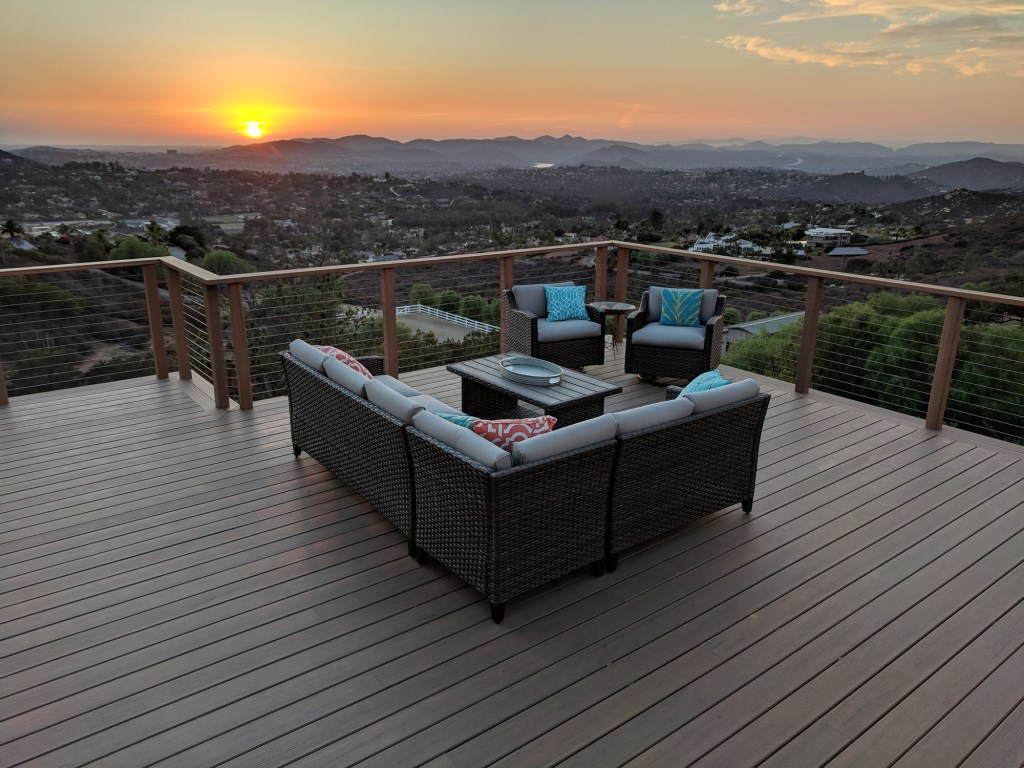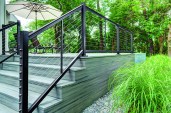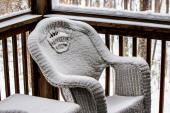Dave Fraser operates by two simple rules.
“One, we only advise what we would do on our own home. And two, we build like we’re building on our own home,” says the award-winning San Diego contractor.
Those two rules work pretty well. Business is booming for 19-year-old company Fraser Decks & Patios. His team of 14 complete up to 100 replacement deck projects a year, most in the $20,000-range.
Deck replacement means Fraser has seen his share of bouncy, flimsy, and sloped decks. The worst one? “It violated code and manufacturer guidelines 47 times. The footings, framing, and fasteners were all wrong. The rim joist was hanging by a thread. The weird part? It was built by a well-known licensed contractor. Our rebuild was showcased by a major deck material manufacturer,” Fraser says proudly.
JLC readers should never face a deck permitting issue, especially over cable rail in-fill. Here are five tips to help ensure your projects go off without a hitch:
1. Add Intermediate Pickets
Intermediate pickets (also called ‘vertical spacers’) help maintain proper cable spacing and reduce the chance for cable deflection (sag). Pickets are typically 1″x 2″ or 2″x 2″ wood strips, 1″ copper water tubing, 1/4″ thick metal flat bar,or other slim material. Cable rail manufacturer Feeney offers pre-drilled ¾” square powder-coated aluminum pickets and 316 marine-grade stainless steel pickets at just 5/8” in diameter.
2. Three Inches Apart
The International Building Code says a 4”-ball cannot pass through any opening in a railing. Because cable is non-rigid and deflects, it’s a good idea to space cables no more than three inches apart. Always check with your local building department to find out if there are special local requirements for spacing.
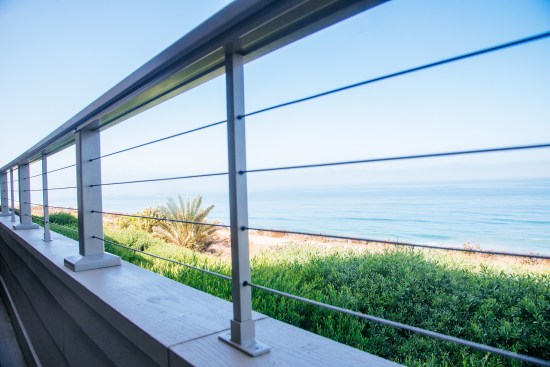
Courtesy Feeney, Inc.
3. Three Feet Apart
Space a cable rail post or intermediate picket at least every three feet. Spacing the posts/pickets three feet apart and the cables three inches apart ensures safe, taut spacing.
4. Corner Posts
In most instances, cables terminate at a single corner post. End and corner posts carry most of the cable tension, ranging from 200 to 300 pounds on each cable, so be sure to use posts that meet or exceed the minimum requirement. To run the cables around a corner, consider installing double posts at the corner, or use a post manufactured for this purpose, such as Feeney’s Single Corner Posts.
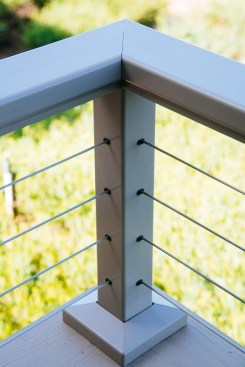
Courtesy Feeney, Inc.
5. Run Length for Straightaways or Bends
Cable rail straight runs (no corners or bends) should not exceed 70 feet. Runs with corner bends (utilizing double corner posts or a single post made specifically for a corner bend) should not exceed 40 feet or include more than two corners per run. If you use swage-type fittings like a CableRail Conceal Kit, you may want to shorten run lengths.
To avoid callbacks, Fraser advises contractors to follow best practice and team-up with a cable company that values your reputation as much as you do. “If you do cable rail right, it’s invisible,” as his Instagram page vividly demonstrates. As for a go-to partner, Fraser made his mind up four years ago. “It’s Feeney. They’re one of very few companies I stake my reputation on,” Fraser reports.
One final word of advice. If you’re looking for profitable projects that can weather economic uncertainty, yes, even in a pandemic, think decks. ”I predicted last spring if the governor allowed us to stay open, we’d have tons of work,” says Fraser. “That’s exactly what’s happened.”
For assistance with your next project, visit Feeney, Inc.

